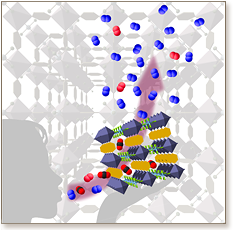

 The capture and separation of traces and concentrated CO2 from important commodities such as CH4, H2, O2 and N2, is becoming important in many areas related to energy security and environmental sustainability. While trace CO2 concentration removal applications have been modestly studied for decades, the spike in interest in the capture of concentrated CO2 was motivated by the need for new energy vectors to replace highly concentrated carbon fuels and the necessity to reduce emissions from fossil fuel-fired power plants. CO2 capture from various gas streams, at different concentrations, using physical adsorbents, such as activated carbon, zeolites, and metal–organic frameworks (MOFs), is attractive. However, the adsorbents must be designed with consideration of many parameters including CO2 affinity, kinetics, energetics, stability, capture mechanism, in addition to cost. Here, we perform a systematic analysis regarding the key technical parameters that are required for the best CO2 capture performance using physical adsorbents. We also experimentally demonstrate a suitable material model of metal organic framework as advanced adsorbents with unprecedented properties for CO2 capture in a wide range of CO2 concentration. These recently developed class of MOF adsorbents represent a breakthrough finding in the removal of traces CO2 using physical adsorption. This platform shows colossal tuning potential for more efficient separation agents and guide researchers on the crucial criteria to be considered in the development of adsorbents for traces and low concentration CO2 capture.
The capture and separation of traces and concentrated CO2 from important commodities such as CH4, H2, O2 and N2, is becoming important in many areas related to energy security and environmental sustainability. While trace CO2 concentration removal applications have been modestly studied for decades, the spike in interest in the capture of concentrated CO2 was motivated by the need for new energy vectors to replace highly concentrated carbon fuels and the necessity to reduce emissions from fossil fuel-fired power plants. CO2 capture from various gas streams, at different concentrations, using physical adsorbents, such as activated carbon, zeolites, and metal–organic frameworks (MOFs), is attractive. However, the adsorbents must be designed with consideration of many parameters including CO2 affinity, kinetics, energetics, stability, capture mechanism, in addition to cost. Here, we perform a systematic analysis regarding the key technical parameters that are required for the best CO2 capture performance using physical adsorbents. We also experimentally demonstrate a suitable material model of metal organic framework as advanced adsorbents with unprecedented properties for CO2 capture in a wide range of CO2 concentration. These recently developed class of MOF adsorbents represent a breakthrough finding in the removal of traces CO2 using physical adsorption. This platform shows colossal tuning potential for more efficient separation agents and guide researchers on the crucial criteria to be considered in the development of adsorbents for traces and low concentration CO2 capture.